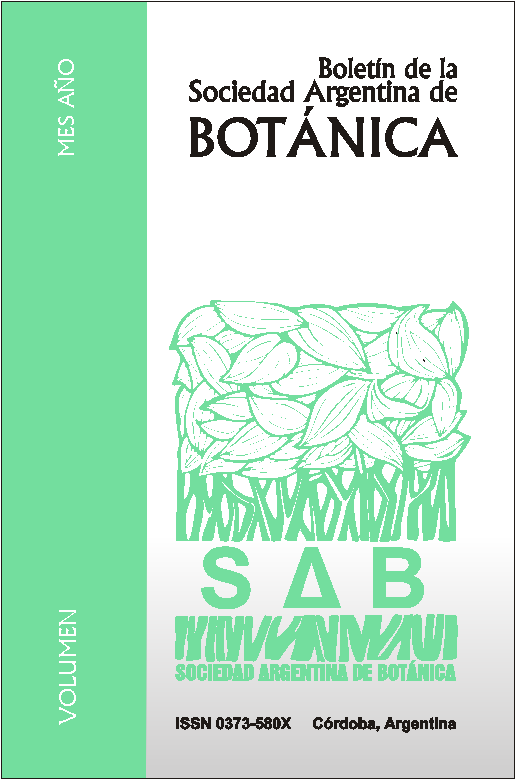Physical dormancy and ex situ seed conservation of Amburana cearensis and Myroxylon peruiferum (Fabaceae).
DOI:
https://doi.org/10.31055/1851.2372.v50.n2.11660Keywords:
Amburana cearensis, seeds conservation, physical dormancy, Myroxylon peruiferum, quina colorada, roble del país.Abstract
Physical dormancy and ex situ seed conservation of Amburana cearensis and Myroxylon peruiferum (Fabaceae). Amburana cearensis and Myroxylon peruiferum are two native species from northwestern Argentina that are threatened by exploitation for their wood, making it a priority to establish programs of plant production, restoration ecology and conservation. However, one obstacle for such programs is the occurrence of seed dormancy. The objectives of this study were to determine the presence of physical seed dormancy, possible methods for breaking dormancy, the seed storage behaviour and to assess the dormancy status after seed storage in both species. The seeds of A. cearensis showed physical dormancy and mechanical and chemical scarification were effective methods for breaking seed dormancy. M. peruiferum seeds showed no physical dormancy. A. cearensis produced orthodox seeds, thus they can be preserved in genebanks, while seeds of M. peruiferum were sensitive to desiccation and storage at -18°C. After a year of dry storage, a high proportion of A. cearensis seeds were able to germinate (i.e. physical dormancy levels had reduced). These results will be useful for plant production in the greenhouse, reforestation ecology and in situ and ex situ conservation programs of these two species.Downloads
Downloads
Published
How to Cite
Issue
Section
License
Provides immediate and free OPEN ACCESS to its content under the principle of making research freely available to the public, which fosters a greater exchange of global knowledge, allowing authors to maintain their copyright without restrictions.
Material published in Bol. Soc. Argent. Bot. is distributed under a Creative Commons Attribution-NonCommercial-ShareAlike 4.0 International license.









